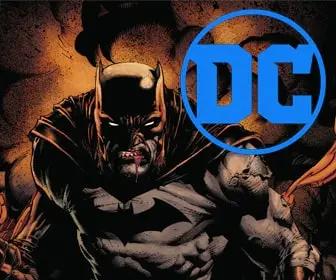
Neal Adams: A Titan of Comic Book Artistry
In the pantheon of comic book legends, Neal Adams holds a revered place. Renowned for his dynamic and realistic artwork, Adams revolutionized the aesthetics of comic books and left an indelible mark on the industry. His work on iconic characters like Batman, Green Lantern, and X-Men brought a new level of realism and emotional depth to the stories. Beyond his artistic contributions, Adams was also a vocal advocate for creators’ rights. This post celebrates the life and legacy of Neal Adams, exploring his early years, artistic development, and monumental contributions to the world of comics.
Early Life and Development
Neal Adams was born on June 15, 1941, in Governors Island, New York City. Growing up in a military family, Adams moved frequently, exposing him to a variety of cultures and experiences. From a young age, he showed a keen interest in drawing, a passion that would guide his life’s work.
Adams’ journey as an artist began earnestly in his teens when he won an art contest sponsored by Archie Comics. Despite this early success, Adams faced rejection from comic publishers initially. Determined to pursue a career in art, he turned to commercial art and advertising, where he honed his skills in illustration and design.
His break into the comic industry came in the early 1960s, starting with Archie Comics and then moving on to work for Warren Publishing’s black-and-white horror-comics magazines. His talent quickly became evident, and soon after, he started working on major titles for DC Comics.
Artistic Style and Influence
Neal Adams is credited with introducing a new level of realism to comic book art. His ability to depict anatomy accurately, his dynamic composition, and his dramatic use of perspective set his work apart from the cartoonish style prevalent in comics at the time. Adams’ art was not just technically proficient; it was also emotionally compelling, bringing a new depth to character expressions and storytelling.
His tenure on “Batman” in the late 1960s and early 70s is particularly notable. Adams’ portrayal of the Dark Knight was grittier and more realistic, a stark contrast to the campy portrayal of the character in the popular TV show of the era. This darker and more dynamic Batman has influenced nearly every depiction of the character since.
Adams also made significant contributions to “Green Lantern/Green Arrow,” tackling social issues through the comic medium. His willingness to address topics like racism, drug addiction, and poverty was groundbreaking and showed the potential of comics as a platform for commentary and change.
Advocacy and Legacy
Beyond his artistic contributions, Neal Adams was a passionate advocate for creators’ rights. He played a pivotal role in securing recognition and fair compensation for comic creators, including the legendary Superman creators Jerry Siegel and Joe Shuster.
Neal Adams passed away on April 28, 2022, but his legacy endures. His influence is seen in the generations of artists he inspired and the continued reverence for his groundbreaking work. Adams’ commitment to pushing boundaries, both artistically and in the fight for creators’ rights, cements his status as a titan in the comic book industry.
Collectors
For fans of Neal Adams, renowned for his revolutionary and dynamic artwork, certain comic book issues stand out as quintessential examples of his influential style and storytelling. Here are five essential comic book issues that every Neal Adams fan should have in their collection:
- “Batman” #251 – “The Joker’s Five-Way Revenge!”: This issue marks one of the most iconic Batman stories ever created. Adams’ depiction of the Joker redefined the character from a harmless prankster into the sinister, unpredictable villain that has become a staple in the Batman universe. The dramatic art and storytelling in this issue are classic Adams.
- “Green Lantern/Green Arrow” #76 – “No Evil Shall Escape My Sight!”: This issue kicked off the groundbreaking run of Green Lantern/Green Arrow that Adams did with writer Denny O’Neil. The series is renowned for its socially conscious stories, and this issue, in particular, is noted for addressing issues of injustice and corruption, marking a significant moment in comic book history.
- “X-Men” #56 – “What is…the Power?”: This issue features the first full-story artwork for X-Men by Neal Adams. His dynamic art brought new life to the series and helped revitalize the struggling title with his detailed and energetic style. His run on X-Men is often credited with setting the stage for the series’ later success.
- “Superman” #233 – “Superman Breaks Loose”: This issue is part of a pivotal Superman storyline known as the “Kryptonite Nevermore!” saga. Adams’ cover art is particularly iconic, showcasing a powerful image of Superman breaking the chains. His work on the Superman series added a new level of dynamism to the character.
- “Deadman” in “Strange Adventures” #207: Adams’ work on Deadman is notable for its narrative innovation and artistic excellence. The character allowed Adams to explore complex themes and showcase his talent for expressive and dramatic visuals. His work on Deadman remains a high point in his career and a must-have for fans.
Conclusion
Neal Adams’ journey from a passionate young artist to a revered icon in the comic book industry is a testament to his talent, determination, and vision. His realistic approach to superhero art changed the visual language of comics and his advocacy reshaped the industry’s treatment of creators. For fans, artists, and anyone who appreciates the power of visual storytelling, Neal Adams’ work continues to inspire and captivate. As we look back on his incredible body of work, we are reminded of the enduring impact one artist can have on an entire medium. Neal Adams was not just a creator of comic book art; he was a creator of worlds, emotions, and legacies that will live on in the pages of history.














